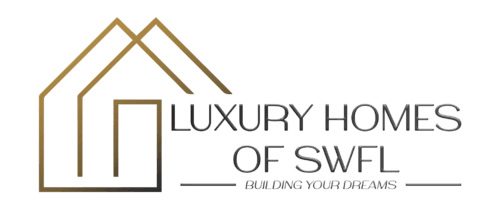Frequently Asked Questions
FAQ's
Our FAQs page is designed to provide quick answers to common questions about our services, building process, design options, and more. Whether you're curious about our construction timeline, materials used, or specific requirements like flood zone regulations, this page offers clear and concise information to help guide you through your journey with Luxury Homes of SWFL. Explore our FAQs to find the answers you need and make informed decisions with confidence

General Questions
Why Luxury Homes of SWFL?
Choosing Luxury Homes of SWFL as your builder means partnering with a team dedicated to creating exceptional homes tailored to your vision. With our commitment to quality craftsmanship, attention to detail, and deep knowledge of local building codes and standards, we ensure a seamless and stress-free building experience. Our expertise in designing homes that reflect the unique charm of Southwest Florida, combined with our personalized service, guarantees a home that is not only beautiful but built to last. Trust us to bring your dream home to life with unmatched dedication and care.
Construction Process & Expectations
Design & Customization
Land & Lot-Specific
Regulatory & Environmental
Localized Buyer Questions
Financial & Contracting
Warranties & Aftercare
Still Have Questions?
Let’s talk about your build or review your lot.
Guides and Resources
MARCO ISLAND NATIVE PLANT LIST
The Marco Island Native Plant List, required by local code, ensures that new landscaping incorporates native species that thrive in the island's unique environment. These plants support local wildlife, promote sustainability, and maintain the natural beauty of Marco Island. Following this list helps protect the island's ecosystem while enhancing the aesthetic appeal of each property.
Marco Island Plant List
| CITY OF MARCO ISLAND NATIVE PLANT LIST | |||
|---|---|---|---|
| TREES - LARGE | |||
| NAME | COASTAL ZONE | MID ZONE | INLAND ZONE |
| Bald Cypress (Taxodium districuum) | X | X | X |
| Fiddlewood (Citharexylum fruitcosum) | X | X | |
| Gumbo Limbo (Bursera simaruba) | X | ||
| Hackberry (Celtis laevigata) | X | X | X |
| Jamaica Dogwood (Piscidia piscupula) | X | ||
| Laurel Oak (Quercus laurifolia) | X | X | X |
| Live Oak (Quercus virginianna) | X | X | X |
| Mahogany ( Swientenia mahogoni) | X | X | |
| Mastic (Mastichodendron foetidissimum) | X | X | |
| Native Fig (Ficus aurea) | X | ||
| Paradise Tree (Simarouba glauca) | X | ||
| Red Maple (Acer rubrum) | X | X | X |
| Royal Palm (roystonea elata) | X | X | |
| Seagrape (Coccoloba uvifers) | X | X | |
| Slash Pine (Pinus elliottii) | X | X | X |
| Sweet Gum (Liguidambar styraciflua) | X | X | X |
| Sycamore (Platanue occidentalis) | X | X | X |
| West Indian Laureicherry (Prunus myrtifolia) | X | ||
| Wild Tamarind (Lysiloma latisiliguum) | X | X | |
| Willow Bustic (Dipholis salicifolia) | X | X | |
| Wingleaf Soapberry (Sapindus saponaria) | X | X | |
| TREES - MEDIUM TO SMALL | |||
| NAME | COASTAL ZONE | MID ZONE | INLAND ZONE |
| Black Ironwood (Krugiodendron ferreum) | X | X | |
| Blolly (Guapira discolor) | X | ||
| Cabbage Palm (Sabal Palmetto) | X | X | X |
| Dahoon Holly (ilex cassine) | X | X | X |
| East Palatka Holly (hex attenuate) | X | X | X |
| Florida Elm (IJimus Americana) | X | X | X |
| Geiger Tree (Cordia sebestena) | X | ||
| Magnolia (Magnolia grandiflora) | X | X | X |
| Milkhark (Drypetes diversifolia) | X | ||
| Pigeon Plum (Coccoloba diversifolia) | X | ||
| Satin Leaf (Chrysophyhlum oliviforme) | X | ||
| Scrub Hickory (Carya floridana) | X | X | X |
| Scrub Live Oak (Quercus geminate) | X | X | X |
| Simpson Stopper (Myricianthes fragrans) | X | X | X |
| Sohiderwood (Colubtina elliptica) | |||
| SHRUBS - LARGE ("B" BUFFERS) | |||
| NAME | COASTAL ZONE | MID ZONE | INLAND ZONE |
| Bahama Strongbark (Bourreria Ovata) | X | ||
| Black ironwood (Krugiodendron ferreum) | X | X | |
| Buttonwood (Conocarpus erectus) | X | ||
| Catciaw (Pithecellobium ungruis-cati) | X | X | |
| Cinnamon Bark (Canella winterana) | X | ||
| Cinnecord Acacia (Acacia choriophylla) | X | X | |
| Crabwood (Ateramnus lucidus) | X | X | |
| Darling Plum (Reynosia septentriolalis) | X | ||
| Florida Privet (Forestiera segregate) | X | X | ? |
| Golden Dewdrop (Duranta repens) | X | X | |
| Jamaica Caper (Capparis cynophallophora) | X | X | |
| Maiden Bush (Savia bahamensis) | X | ||
| Myrsine (Myrsine floridana) | X | X | ? |
| Pigeon Plum (Coccoloba diversofolia) | X | ||
| Paurotis Palm (Acoelorrhaphe wrightii) | X | X | |
| Red Berry Stopper (Eugenia confuse) | X | ||
| Seagrape (Coccoloba iivifera) | X | X | |
| Wild Lime (Zanthoxylum tagara) | X | X | |
| Simpson Stopper (Myrcianthes fragrans) | X | X | X |
| Spicewood (Calyptranthes spp.) | X | ||
| Walters Viburnum (Viburnum obovatum) | X | X | X |
| Wax Myrtle (Myrica cerifera) | |||
| Yellow Elder (Tecome stans) | X | X | ? |
| SHRUBS - MEDIUM TO SMALL | |||
| NAME | COASTAL ZONE | MID ZONE | INLAND ZONE |
| Bay Cedar (Suriana maritime) | X | ||
| Blackbead (Pithecellobium guadalupense) | X | X | |
| Coco Plum (Chyursysobalanus icaco) | X | ||
| Cordia (Cordia globosa) | X | ||
| Firebush (Hamelia patens) | X | X | |
| Florida Privet (Forestiera segregate) | X | X | ? |
| Golden Dewdrop (Duranta repens) | X | X | |
| Jamaica Caper (Capparis cynophallophora) | X | X | |
| Leather Fern (Acrosticham danaeaefolium) | X | X | |
| Maiden Bush (Savia bahamensis) | X | ||
| Myrsine (Myrsine floridana) | X | X | ? |
| Necklace Pod (Sophora tomentosa) | X | ||
| Saw Palmetto (Serenoa repens) | X | X | X |
| Sea Oxeye Daisy (Borrichia trutescens) | X | ||
| Seven Year Apple (Casasia Clusiifolia) | X | ||
| Silver Saw Palmetto (Serenoa repens “Cinerea”) | X | X | X |
| Spicewood (Calyptranthes spp.) | X | ||
| White Indigo Berry (Randia axculeate) | X | X | |
| Wild Coffee (Psychotria riervosa) | X | X | |
FEMA FLOOD MAP
The Florida FEMA flood map is a critical tool used to assess flood risks and establish building requirements based on elevation levels. It designates areas at different flood risk levels, helping homeowners and builders understand potential flood hazards. Elevation levels on these maps indicate the height above sea level at which properties must be built to minimize flood damage. Higher elevations generally mean lower flood risk, influencing insurance rates and building codes to ensure safety and compliance with FEMA guidelines. On Marco Island, the building code requires that homes in flood zones be constructed to meet or exceed specific base flood elevation (BFE) levels, with an additional requirement of being at least 1 foot above the BFE. This ensures properties are adequately protected against flooding risks and compliant with FEMA regulations. Understanding these maps and codes is essential for informed decision-making and safeguarding properties.
MARCO ISLAND LOT & BLOCK MAP
The Marco Island Lot and Block Map is an interactive mapping tool that provides detailed parcel information for properties across Marco Island. This map allows users to view lot and block numbers, property boundaries, zoning details, and geographic data, making it an essential resource for homeowners and builders. Whether you're planning a custom build, researching land availability, or exploring the area's layout, this tool offers a clear and comprehensive view of property divisions in Marco Island.

